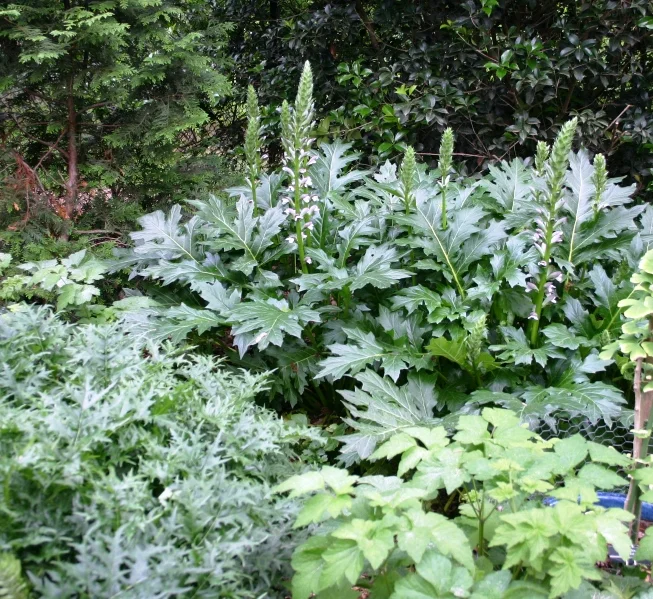One of my former neighbors persisted in trying to grow Pachysandra as a groundcover under his oak trees. Tray after tray of plugs arrived and were planted in spring, only to die by fall. He finally relinquished his preferred plan and planted variegated Bishop’s Weed (Aegopodium podagraria) instead. Also called Goutweed, Snow On The Mountain, or Ground Elder, Bishop’s Weed is an aggressive, invasive groundcover that is difficult to eradicate once established. I suggest you avoid it. Given the neighbor’s difficulty in growing Pachysandra, imagine my surprise last year when I stumbled across a large (forty feet by seventy feet) patch of it growing on a woodland bank near my creek. In May, it looked like a large emerald blanket, and even draped over the creek bank like a curtain. This week, it shows the ravages of extreme cold and too much rain, but it is still an effective groundcover. I have no doubt that it will return to its former glory when temperatures warm in spring.
There are two species of Pachysandra. Allegheny Spurge (Pachysandra procumbens, pronounced pak-ih-SAN-drah pro-KUM-benz) is native to the southeast. It is evergreen to semi-evergreen, and cold hardy in zones 7-8. It grows in rich, moist, acidic soil, in dappled shade to full shade. It is not invasive. This is the variety that is living happily in my woodlands. It averages nine inches tall and has not been browsed by deer, despite heavy populations in this area.
Like other plants we have adopted from the Land of the Rising Sun, Japanese Pachysandra (Pachysandra terminalis, pronounced pak-ih-SAN-drah ter-min-AL-iss) tolerates a wide range of temperatures (zones 5b-9a) and is a more aggressive grower than the native type. It may grow up to a foot tall but is typically shorter, and spreads by underground rhizomes. ‘Green Sheen’ is especially heat tolerant. ‘Green Carpet’ is a mounded uniform form that lends itself to edging for shady beds.
Both the above species bloom in spring, but the flowers are not particularly eye-catching. Bees love them. Pachysandra is in the same family as Boxwood and shares some of its susceptibility to scale, leaf spots, and root rot. Don’t overwater, and if dead or diseases patches become apparent, remove them before the problem spreads to the rest of the bed.
Big box stores usually sell Pachysandra in trays of 2-inch plugs. Tease them apart carefully to avoid damaging tender roots. Place plugs six inches apart for rapid coverage, or up to a foot apart. Even at the wider spacing, ground coverage should be complete in three years. when grown in moist shade and fertile soil. Be careful to avoid constantly wet soils.












